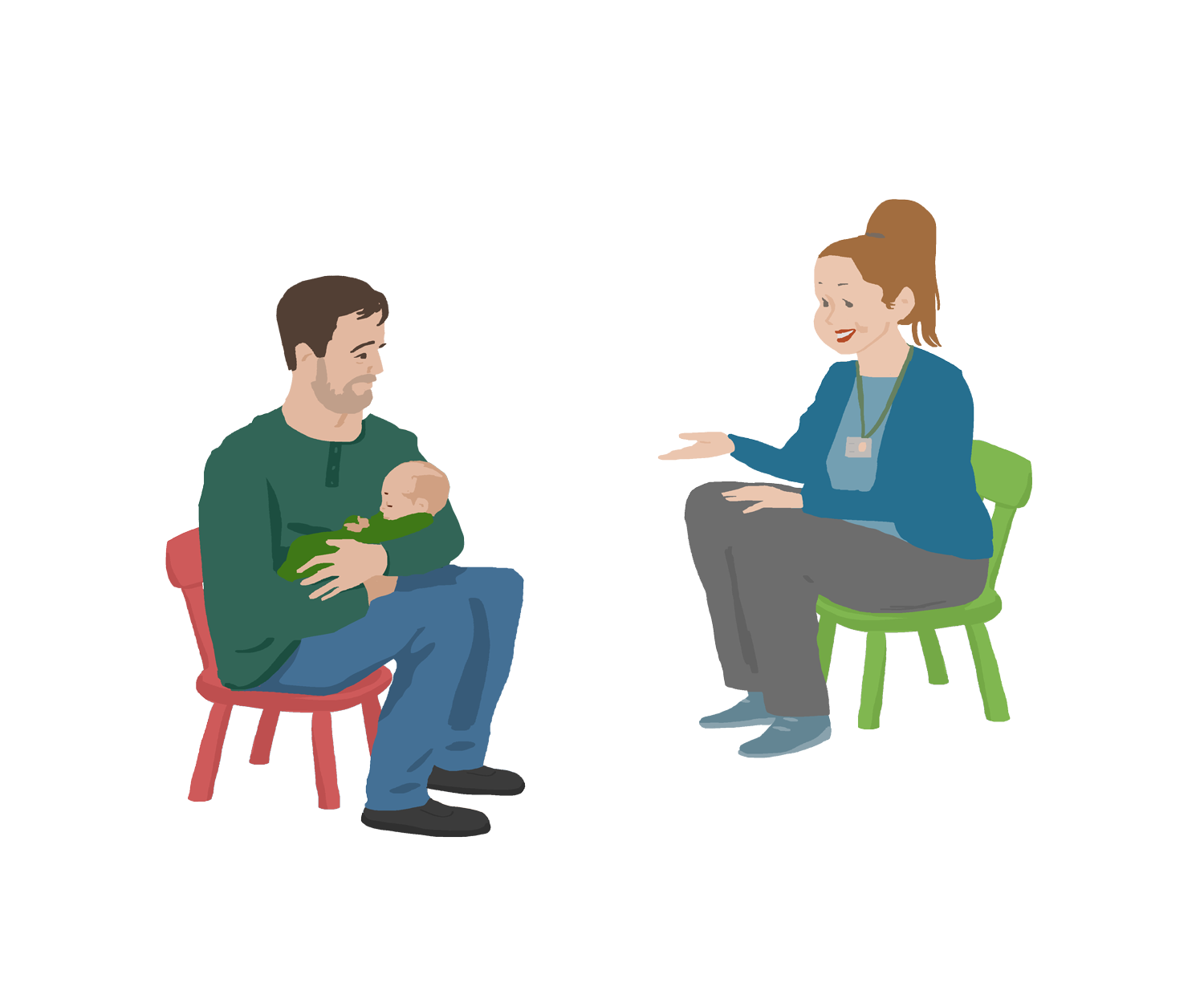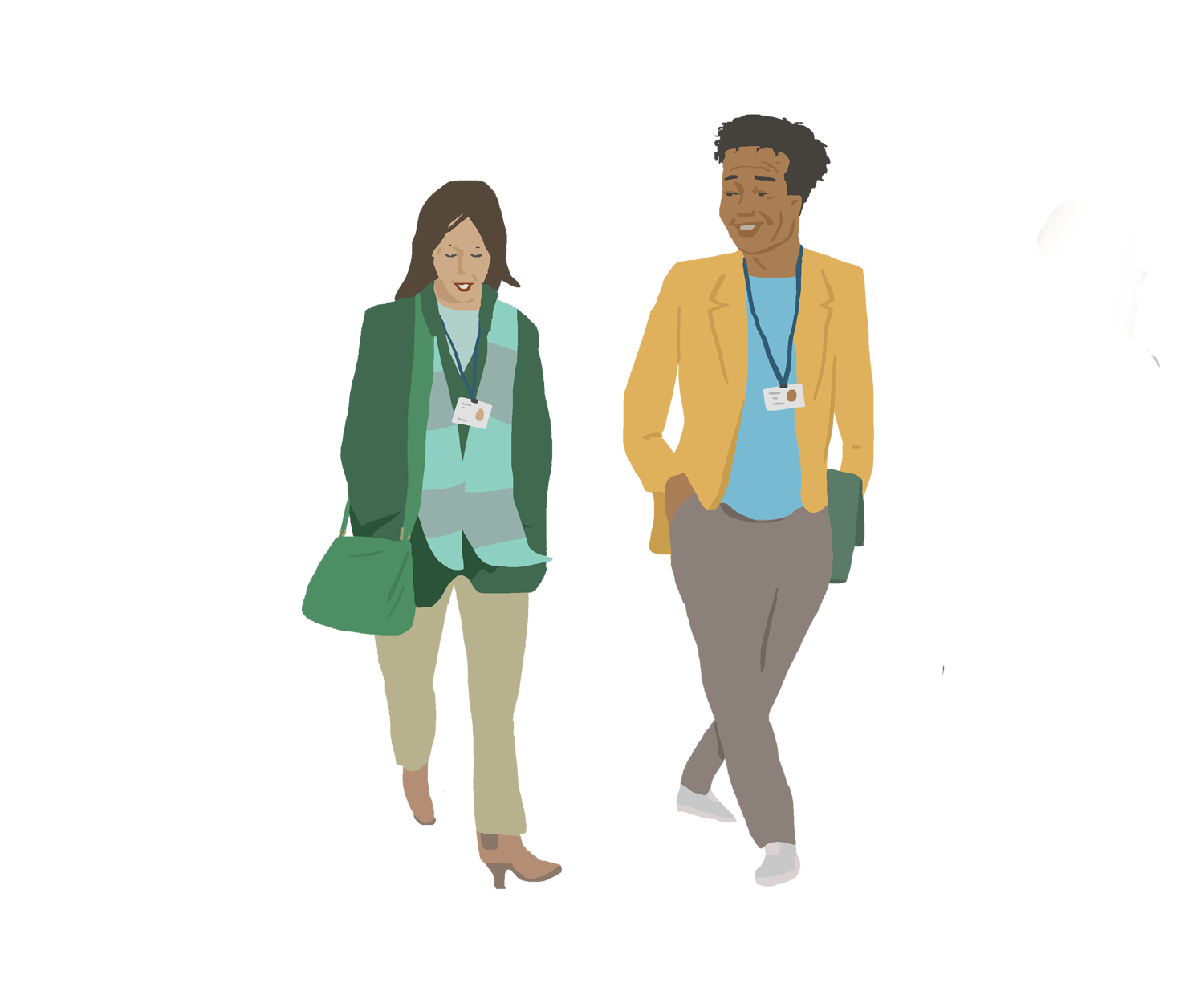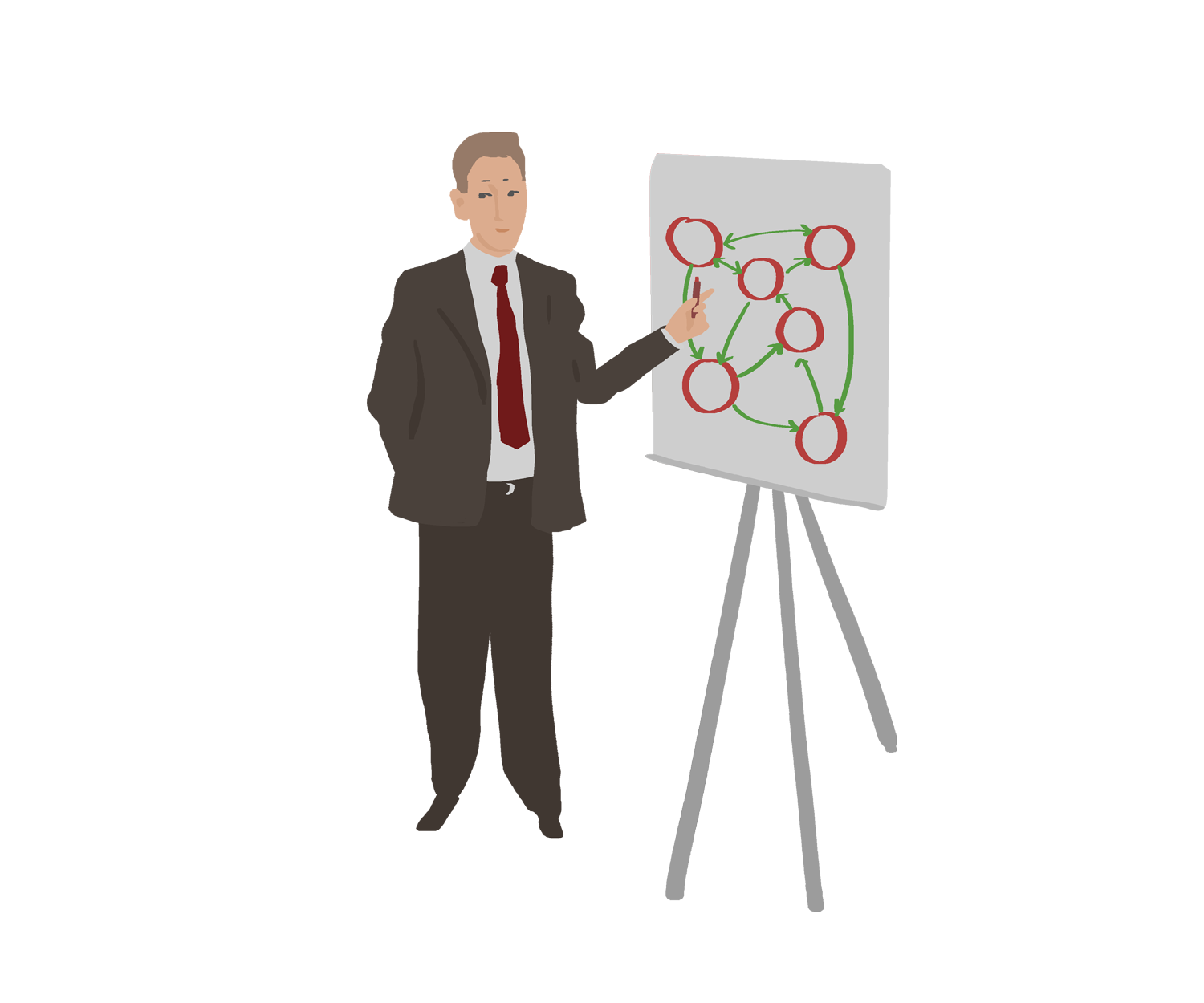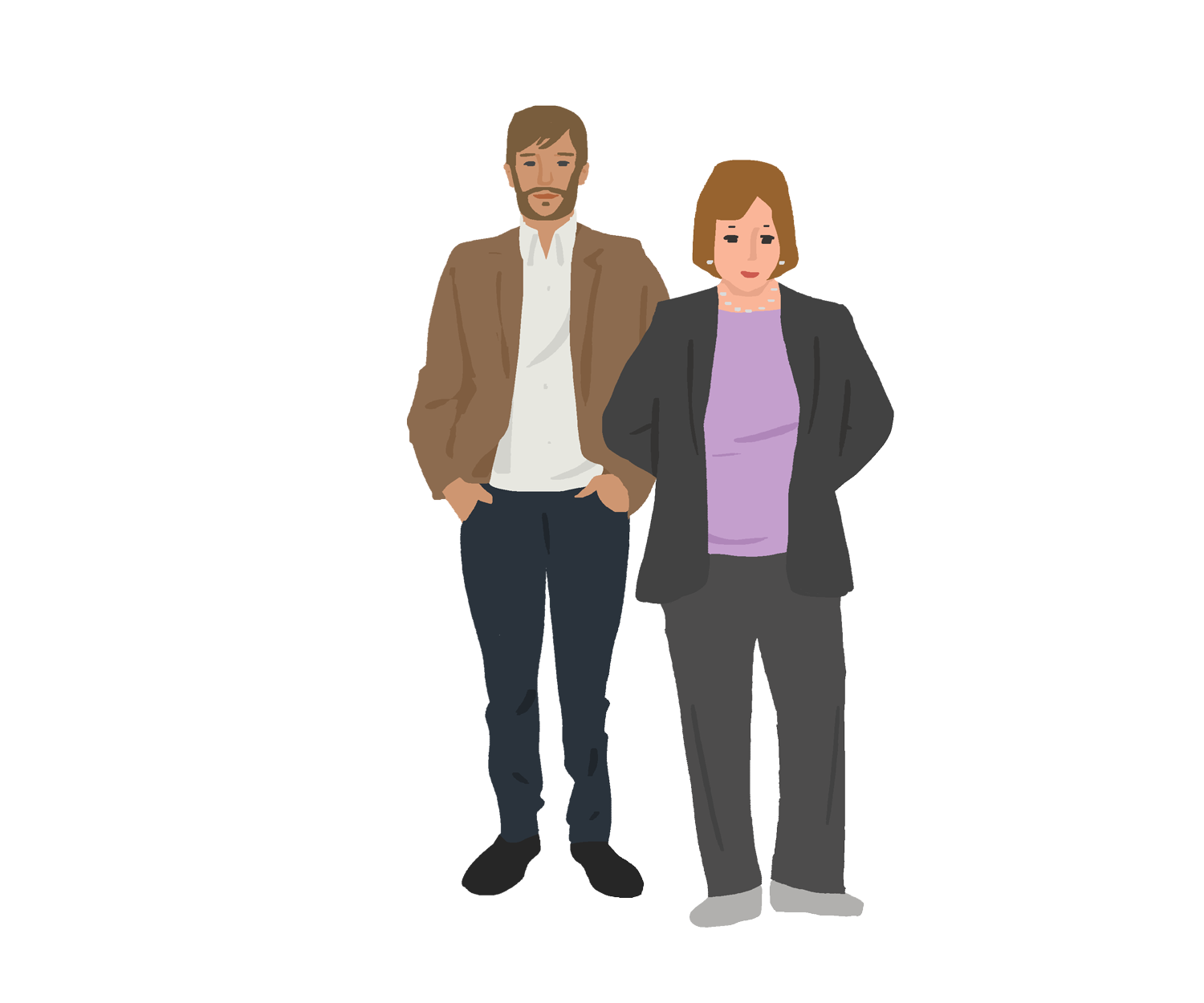our
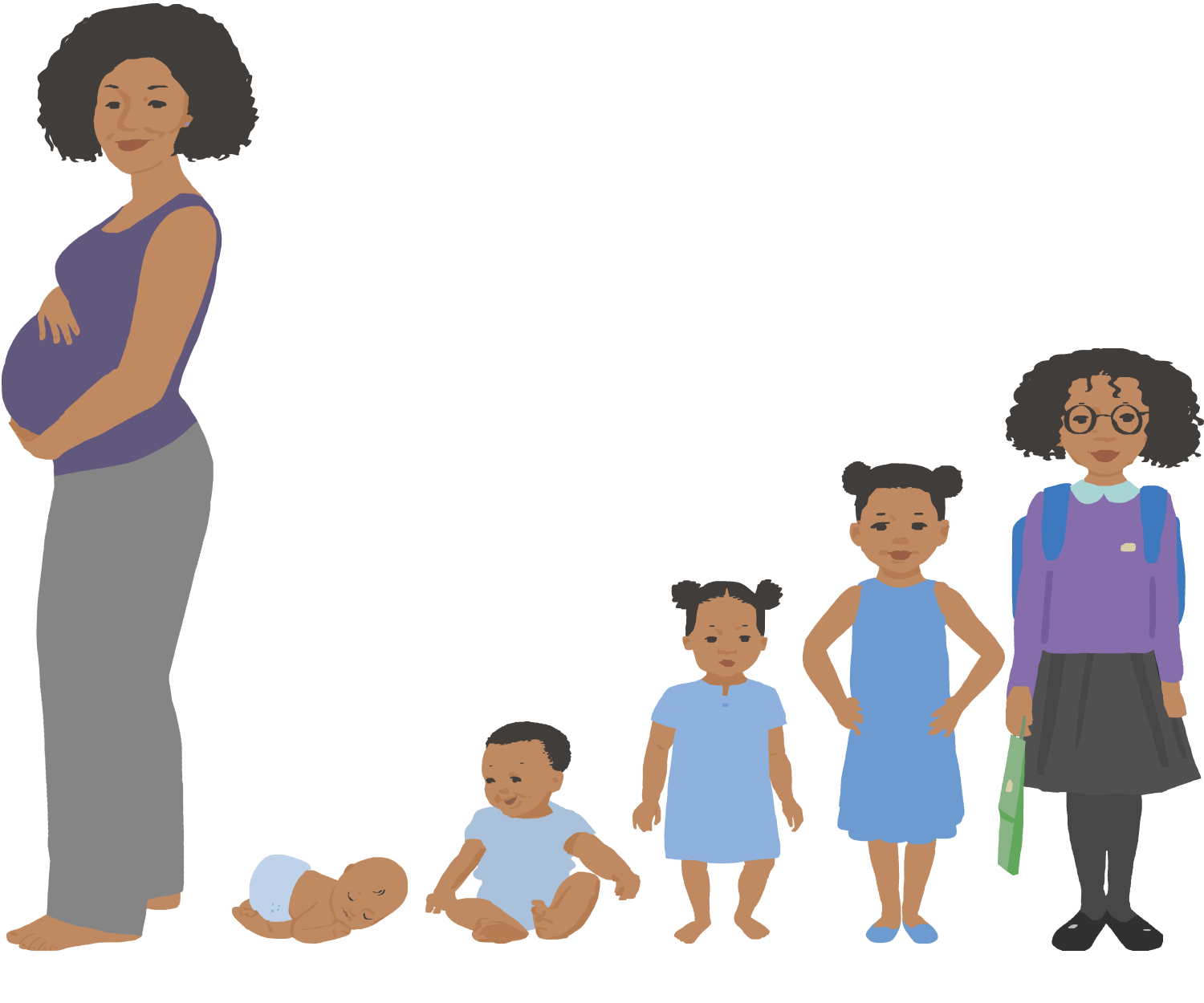
Excellent services at every stage
Based on what we know about the current service landscape and what we’ve learned from families and early years professionals, our strategy for 2022-26 aims to deliver:
Positive engagement/early intervention with families at the ante-natal stage
To ensure that specialist services provide support to prepare families for parenthood and offer support at the earliest possible opportunity.
Positive engagement with families during Early Years
To ensure our family needs are at the heart of joined-up services, so that families access the right support at the right time.
Positive transition from childcare to Early Years education
To ensure a seamless transition process for all children and parents from pre-school settings into early years education.
How will we achieve this?
There are five strategic themes:
1. Integrate our services
We need this because:
- Siloed working creates barriers between services, and gaps that families can slip between
- We know that families (especially families in need) get better care when services work together
- Resources are stretched; by working together, we can avoid duplication, minimise waste and build on each other’s work
We need:
- Shared decision-making supported by shared information
- Systems for collaboration between local authorities, health and the third sector
- A place-based approach to service delivery, including co-located Early Years teams where appropriate
- Better communication between services
- More positive relationships between professional groups
- A workforce motivated and empowered to work across service boundaries
- A workforce who feel like a single team, pulling together for the same goals
We’ll get there by:
- Setting up more co-located teams across the region
- Exploring options for joint or co-commissioning
- Learning from evaluations of pathfinder pilot work
- Helping professionals to gather feedback from families, so it can be used in planning and future service co-design activities
2. Take a person-centred approach to service design
We need this because:
- We want to offer accessible services that families want to use
- We want to offer services that address the diverse range of needs in our communities, including those of disadvantaged or minority groups
- We don’t know enough about the needs of all our service-users, and we don’t recognise how different these needs are, or how they change over time
- Families can feel undermined and abandoned when services don’t build from their strengths as well as their needs
We need:
- To do regular research with service-users and improve our methods of gathering feedback, so we can see our services and workforce through the eyes of the families who depend on them
- To develop the skills of the Early Years workforce, so that they’re better equipped to recognise family strengths and listen to family needs
- Community-led services, commissioned from the ground up
- To identify and remove barriers to service access, eg by making services work better across council boundaries
- Less bureaucracy
We’ll get there by:
- Budgeting for regular consultation with service users
- Doing more workforce co-design training and development, to help professionals capture and represent the voices of families
- Increasing regional collaboration and service integration
- Looking for ways to invest in community-led services
3. Develop technology infrastructure and systems to enable collaboration
We need this because:
- Service professionals don’t have access to up-to-date shared information about families, which means family members have to constantly repeat their case history at every meeting and consultation
- Staff in different councils, services and professions can’t easily and securely share information across organisational boundaries
- Children can be missed when referrals are incomplete or delayed, because of other system barriers
- We would like to improve our monitoring of service targets and make it easy to track outcomes for individual children and for our Early Years population
We need:
- A way for service professionals across the region to easily access, update and share family information, from the device they already use and from the place where they already do their work (which, if they’re a midwife, will often be on the road)
- Agreed standards for data collection, storage and access
- Automated reporting of population level indicators
We’ll get there by:
- Embedding the voice of service-users into everything we do (by putting more emphasis on gathering feedback and making use of it to improve services)
- Continuing to build an evidence base that supports investment in shared IT, and lobbying for that change to be prioritised
- Continuing to make the case for tools that allow staff to suggest changes and improvements
4. Develop our workforce
We need this because:
- Families aren’t always getting the care and support they need, due to lack of staff.
- Staff in health, care and education are extremely busy and the work environment can be stressful.
- There’s no common language to describe the same things between different organisations and professions. This caused unnecessary confusion and slow things down.
- Not all colleagues have been training on evidence-informed services.
We need:
- To attract and train new and returning recruits to the Early Years workforce
- Happier, more confident and less stressed colleagues
- A widely-used common language and common ways of working
- Cross-service training opportunities, particularly in evidence-based care
- Recognition of transferable skills between services and professions
- Clearer career paths for Early Years workers
- More multidisciplinary teams
We’ll get there by:
- Looking for opportunities to invest in growing the team, with appropriate marketing, recruitment and training
- Building closer links with schools, colleges and careers services, to promote jobs and work experience placements in the sector
- Developing a common basic training offer for all Early Years professionals
- Developing clear career progression plans, including personal development and training options
5. Provide accessible information
We need this because:
- Information about available services simply isn’t easy to find, for families or professionals. As a result, some services are under-used
- Consequently, families don’t know where to turn. Professionals don’t always know where to refer them to.
- The information that does exist is fragmented; if you don’t already know where to look, it’s hard to find.
- It’s costly and time-consuming to keep the Family Information Service up-to-date, and staff time for this is limited
We need:
- Clear, accessible, comprehensive, simple information in one place
- Online information that’s so good and so easy to use, it markets itself through word of mouth
- The ability for professionals to edit or annotate information on it, quickly and easily
- Better institutional knowledge about care pathways, and options for referral; if professionals know more about the Family Information Service, they will be more likely to suggest it as a source of help for families
We’ll get there by:
- Exploring ideas and options for a single shared online information service
- Exploring how we could invest in roles across Councils and the Health Board with responsibility for publishing and maintaining that information
- Undertaking mapping/reviewing work to understand current pathways better
- Providing training for service professionals, so they feel better equipped to refer families to information services
- Seeking out opportunities to work with other agencies on future investments in online information services
How will we achieve this?
There are five strategic themes. We need to:
1. Integrate our services
We need this because:
- Siloed working creates barriers between services, and gaps that families can slip between
- We know that families (especially families in need) get better care when services work together
- Resources are stretched; by working together, we can avoid duplication, minimise waste and build on each other’s work
We need:
- Shared decision-making supported by shared information
- Systems for collaboration between local authorities, health and the third sector
- A place-based approach to service delivery, including co-located Early Years teams where appropriate
- Better communication between services
- More positive relationships between professional groups
- A workforce motivated and empowered to work across service boundaries
- A workforce who feel like a single team, pulling together for the same goals
We’ll get there by:
- Setting up more co-located teams across the region
- Exploring options for joint or co-commissioning
- Learning from evaluations of pathfinder pilot work
- Helping professionals to gather feedback from families, so it can be used in planning and future service co-design activities
2. Take a person-centred approach to service design
We need this because:
- We want to offer accessible services that families want to use
- We want to offer services that address the diverse range of needs in our communities, including those of disadvantaged or minority groups
- We don’t know enough about the needs of all our service-users, and we don’t recognise how different these needs are, or how they change over time
- Families can feel undermined and abandoned when services don’t build from their strengths as well as their needs
We need:
- To do regular research with service-users and improve our methods of gathering feedback, so we can see our services and workforce through the eyes of the families who depend on them
- To develop the skills of the Early Years workforce, so that they’re better equipped to recognise family strengths and listen to family needs
- Community-led services, commissioned from the ground up
- To identify and remove barriers to service access, eg by making services work better across council boundaries
- Less bureaucracy
We’ll get there by:
- Budgeting for regular consultation with service users
- Doing more workforce co-design training and development, to help professionals capture and represent the voices of families
- Increasing regional collaboration and service integration
- Looking for ways to invest in community-led services
3. Develop technology infrastructure and systems to enable collaboration
We need this because:
- Service professionals don’t have access to up-to-date shared information about families, which means family members have to constantly repeat their case history at every meeting and consultation
- Staff in different councils, services and professions can’t easily and securely share information across organisational boundaries
- Children can be missed when referrals are incomplete or delayed, because of other system barriers
- We would like to improve our monitoring of service targets and make it easy to track outcomes for individual children and for our Early Years population
We need:
- A way for service professionals across the region to easily access, update and share family information, from the device they already use and from the place where they already do their work (which, if they’re a midwife, will often be on the road)
- Agreed standards for data collection, storage and access
- Automated reporting of population level indicators
We’ll get there by:
- Embedding the voice of service-users into everything we do (by putting more emphasis on gathering feedback and making use of it to improve services)
- Continuing to build an evidence base that supports investment in shared IT, and lobbying for that change to be prioritised
- Continuing to make the case for simple feedback loops that would allow staff to suggest changes and improvements
4. Develop our workforce
We need this because:
- Families aren’t always getting the care and support they need, due to lack of staff.
- Staff in health, care and education are extremely busy and the work environment can be stressful.
- There’s no common language to describe the same things between different organisations and professions. This caused unnecessary confusion and slow things down.
- Not all colleagues have been training on evidence-informed services.
We need:
- To attract and train new and returning recruits to the Early Years workforce
- Happier, more confident and less stressed colleagues
- A widely-used common language and common ways of working
- Cross-service training opportunities, particularly in evidence-based care
- Recognition of transferable skills between services and professions
- Clearer career paths for Early Years workers
- More multidisciplinary teams
We’ll get there by:
- Looking for opportunities to invest in growing the team, with appropriate marketing, recruitment and training
- Building closer links with schools, colleges and careers services, to promote jobs and work experience placements in the sector
- Developing a common basic training offer for all Early Years professionals
- Developing clear career progression plans, including personal development and training options
5. Provide accessible information
We need this because:
- Information about available services simply isn’t easy to find, for families or professionals. As a result, some services are under-used
- Consequently, families don’t know where to turn. Professionals don’t always know where to refer them to.
- The information that does exist is fragmented; if you don’t already know where to look, it’s hard to find.
- It’s costly and time-consuming to keep the Family Information Service up-to-date, and staff time for this is limited
We need:
- Clear, accessible, comprehensive, simple information in one place
- Online information that’s so good and so easy to use, it markets itself through word of mouth
- The ability for professionals to edit or annotate information on it, quickly and easily
- Better institutional knowledge about care pathways, and options for referral; if professionals know more about the Family Information Service, they will be more likely to suggest it as a source of help for families
We’ll get there by:
- Exploring ideas and options for a single shared online information service
- Exploring how we could invest in roles across Councils and the Health Board with responsibility for publishing and maintaining that information
- Undertaking mapping/reviewing work to understand current pathways better
- Providing training for service professionals, so they feel better equipped to refer families to information services
- Seeking out opportunities to work with other agencies on future investments in online information services
